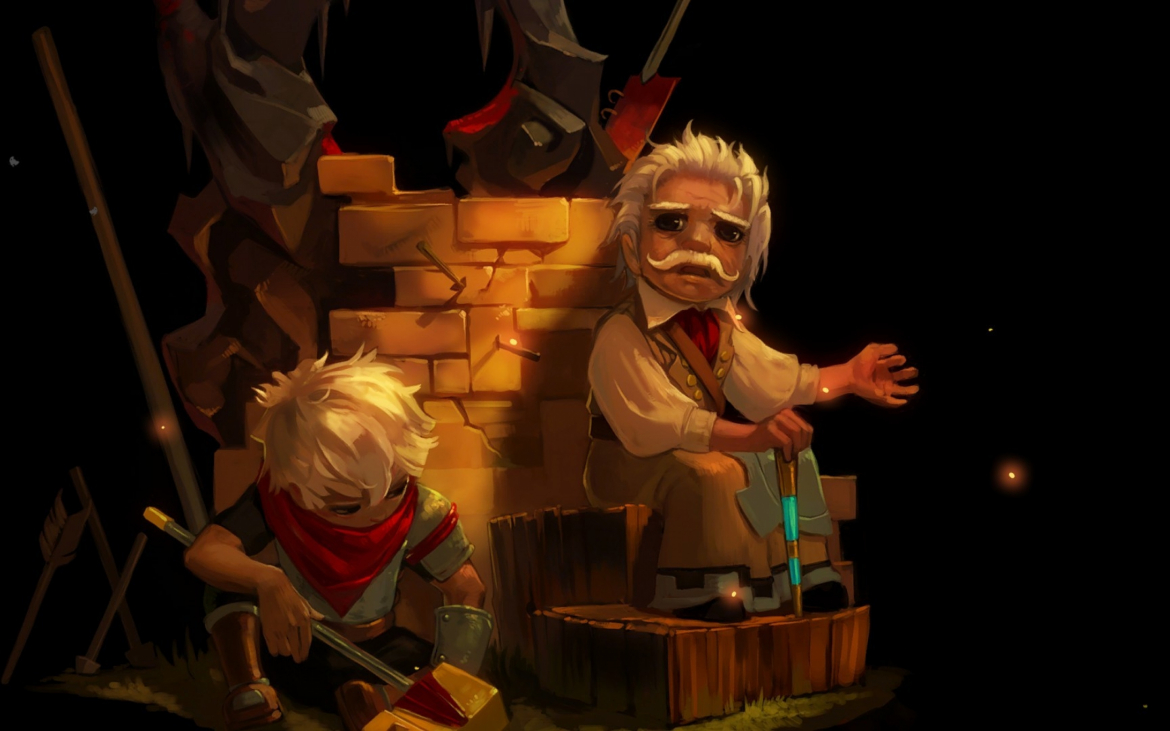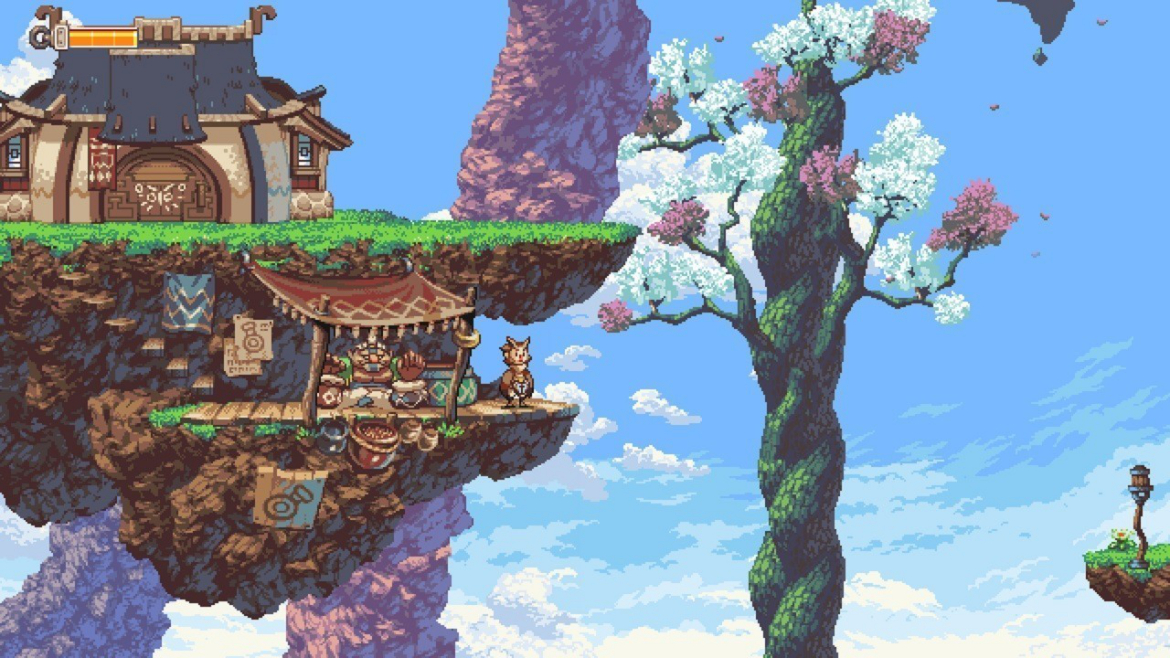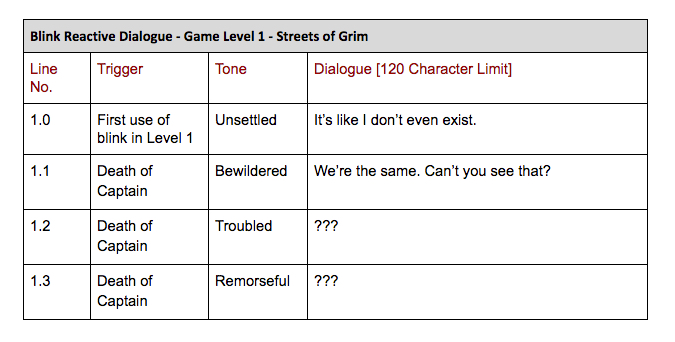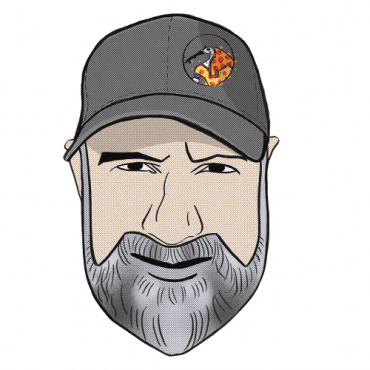Story for Platformer Games: Reactive Dialogue
- Edwin McRae
This is when you have pieces of dialogue that play in response to in-game events or are triggered by encountering a specific piece of environment. It was Bastion that first got me thinking about this technique, as it was a nice touch to have that gravelly-voiced narrator commentating over my in-game actions. It really helped my sense of immersion and the feeling that my actions were being recognised by the game.

So here are a couple of off-the-top-of-my-head examples for our Blink platformer.
Trigger 1 = After blinking through a wall, Blink says, “It’s like I don’t even exist.” This is not a good thing to her. It’s fuel for her existential crisis.
Trigger 2 = After killing a Regime Captain, Blink remarks, “We’re the same. Can’t you see that?” She can’t believe that one human can oppress another. Aren’t all humans ‘good’ deep down?
These dialogues could be done as text bubbles or as voice overs, depending on your budget. And it would pay to have lots of variations for individual events otherwise your player will get tired of those lines if they’re repeated too often. In fact, it might be best to save them for special events and unique mobs, but it all comes down to your game content, and you’ll know after a few playthroughs if the lines are getting tiresome.

You can also show some character development through Reactive Dialogue. What if, by Level 5, Blink is starting to come to terms with her super hero status and her one woman rebellion against the regime?
Trigger 1 = After blinking through a wall, Blink growls, “Like a vengeful spirit.” There’s a sense of aggressive purpose to her now.
Trigger 2 = After killing a Regime Officer, Blink shouts, “Just doing your job, right?” Oooh, getting a little bitter there, Blink.
Blink is shedding her anxiety in favour of a growing confidence and sense of empowerment, but there’s a scary edge to her now. Is she starting to lose touch with her own humanity? Let’s hope not! Uh oh, look what’s on her mind at Level 10!
Event 1 = After blinking through a wall, Blink declares, “I’m the chosen one.” God complex!
Event 2 = After killing a Regime General, Blink asks, “How about I take a shot at running this country?” Is Blink becoming the one thing she despises, a force of oppression?
As you can see, there’s a lot that can be done for character development with just a few lines of dialogue, and you don’t need to fork out great wads of cash on a studio and voice actors. I know it’s not a platformer, but look at Darkest Dungeon. Aside from their now legendary narrator, all of their in-game dialogue is done in text boxes. As long as the lines are short and sharp, and are presented at a time when the player has a moment or two to absorb them, they’ll have the desired effect.

Actually, that does bring me to the most important point about Reactive Dialogue.
Timing.
By their very nature, platformers are high-action beasties, but they do have their quiet moments. You don’t want to present dialogue whilst the PC is trying to jump to that fast-moving platform cunningly suspended over an acid pool filled with mutant, acid-resistant piranhas. Nor is there any point in asking the player to read while Blink is fending off a wave of jack-booted regime stormtroopers. But once Blink is standing safely on the platform, or has finished off the last stormtrooper...yeah, that’s the time to present your speech bubble. In the breathing spaces between the jump-fests and frenetic whacking sessions, moments of character reflection can be quite poignant.

And no, it’s not weird that Blink is talking to herself. Duke Nukem talks to himself all the time and he’s no weirdo...right?
Now, before we wrap this up, I’m going to offer you a table format that you could use and present to your writer when it comes time to produce this Reactive Dialogue.

The more you give your writer in terms of direction, the less time they need to spend coming up with that direction for themselves.
Now don’t get me wrong. If you have room in the budget, it’s a brilliant idea to give your writer as much creative freedom as possible. If they’re able to dig deep into the character, even help to forge her, the resulting dialogue will be so much more authentic and effective. However, if your budget for narrative is teeny tiny, then do the donkey work first. Plan everything out in advance so that all that’s left is for your writer to work their wordsmithing magic.
Right, that’ll do it for Reactive Dialogue, at least for now. I’ll see you again soon for…
Story for Platformer Games: Emotes

About Edwin McRae
Edwin is a narrative consultant and mentor for the games industry.
